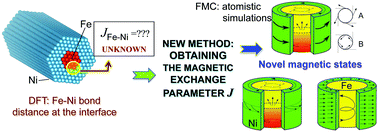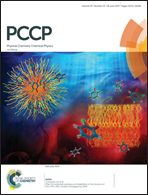Fe/Ni core/shell nanowires and nanorods: a combined first-principles and atomistic simulation study
Abstract
In recent years, construction and characterization of core–shell structures have attracted great attention because of their unique functional properties and their integration into technological devices. However, some aspects of their basic physics still remain to be explored. In this study, we report on an extensive hierarchical multiscale modeling methodology applied to Fe–Ni core/shell nanostructures of technological interest. As a first step, supported on a first-principles study, we develop a methodology to compute primordial but unprecedented parameters such as the exchange coupling and the equilibrium bond distances at the interface, namely JFe–Ni = 35.48 meV and d = 2.5 Å. This methodology can be used for computing fundamental parameters in mixed systems by knowing the parameters in the bulk samples, and the so-obtained results can be used in higher size scale simulations. As a proof, the results obtained are used as input parameters for atomistic simulations on Fe–Ni samples made out of a Fe core surrounded by a Ni shell whose external diameter varies finely in the range 60–110 nm. The inner diameter and height are fixed to be 40 and 50 nm, respectively. We address the structural, electronic, static magnetic and hysteresis properties of the Fe–Ni core/shell cylindrical nanostructures in different size ranges. These nanostructures reveal different magnetic properties with novel complex states, which are studied in detail.



 Please wait while we load your content...
Please wait while we load your content...